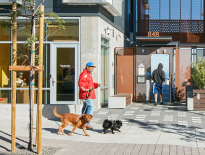Finding Purpose through Collaborative Sustainable Design + Construction
I am going to tell you a story about collaborative design and how it can help us find purpose and change how we approach our work and think about the built environment. Eight miles south of Portland, Oregon, is Lake Oswego and Lakeridge Middle School. The school is going through a rebuild. The new school’s story starts as many other construction projects do. An aging building needs to be replaced. The new structure will be built on adjacent land. Landscaping and trees long beloved by the community need to be removed. From these common beginnings, this construction project’s story takes a different turn and yields first-of-its-kind results. Rather than focusing on purely the bottom line, an interdisciplinary AEC team is organized under guiding principles focused on sustainable construction and creating benefits for the community.
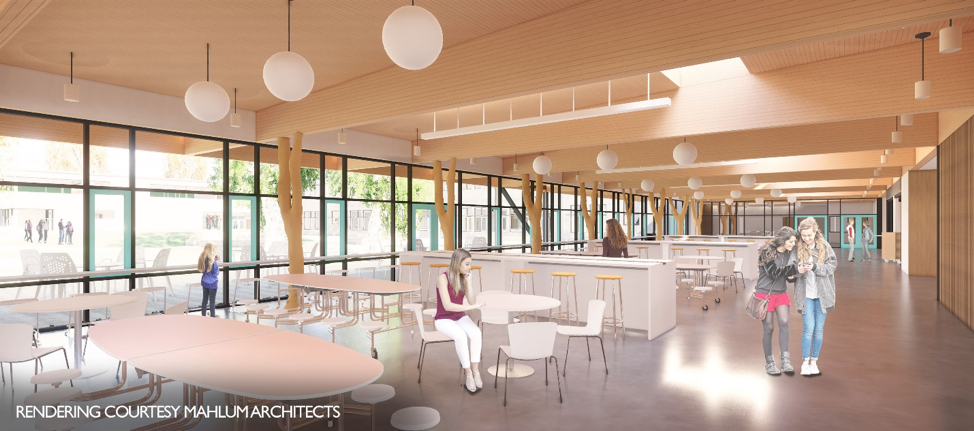
Before diving into this project, I want share some of my path and why this approach matters to me and to others who devote their careers to creating win-win solutions for sustainability. I am a native Seattleite—born and raised in a major metropolitan area surrounded by rivers, lakes, the ocean, mountains, and forests. This environment gave me a strong connection to the natural world, a deep sense of place, and a drive to protect and preserve the places that have formed who I am.
After eight years as an attorney, I found myself drained, jaded, and searching for purpose. I was sick of adversarial systems where everyone plays a zero-sum game. Too often, people pursue short-term goals and forget the importance of the world around us. That lack of long-term vision often leads us as a society to ways of doing business that fail to account for and internalize costly externalities. On March 21, 2016, the International Day of Forests, United Nations Secretary-General Ban Ki-moon called on governments, businesses, and civil society to adopt holistic policies and practices to protect, restore, and sustain healthy forests for our common future. In Mr. Ban’s words, “Investing in forests is an insurance policy for the planet.” I agree and I am on board.
An opportunity came for me to work with WholeTrees Structures, a company with an ambitious goal: change the built environment and improve forests and woodland communities through innovation, collaboration, and sustainable materials. Growing out of Wisconsin’s rural forests, WholesTrees partners with the USDA Small Business Innovation Research Program, the US Forest Service Wood Innovations program, the USDA Forest Products Laboratory, Earthling Interactive, and engineering experts nation-wide to develop the technologies that bring sustainably sourced structural round timber to high-value construction markets.
Collaboration is at the heart of WholeTrees. Internally, we are a small team working in four locations across two states to execute projects across the country. Coordination, communication, and collaboration are keys to our success. WholeTrees strives to be a model of the depth of interdisciplinary connection that can be achieved. This brings us back to the Lakeridge Middle School Rebuild, a project that is creating space for 1,100 students and an excellent illustration of how collaboration in sustainable building adds value for everyone.
The architect, Mahlum Architects, works to build a world where healthy human and environmental systems thrive and believes community empowerment is a game-changing force. It should not be surprising then that the design team engaged the community in three Community Design Workshops. These workshops are a tool Mahlum has been using and refining for the last decade, facilitating project goals that go beyond technical goals to how to best tailor the learning environment to the specific goals of each community. Listening stations allow participants to break out into smaller groups and focus on different points of view within the larger topics. These three meetings brought architects, school administrators, school district representatives, students, parents, and community members together to discuss needs, wants, and goals for the school and the community.
Everyone can find something to benefit from in the 10 guiding principles the project was organized under. Some highlights are:
- Provide schools that are secure yet welcoming and inclusive.
- Provide engaging spaces that invite activity and collaboration.
- Create meaningful learning experiences that emphasize global and local connections.
- Provide optimal environmental conditions for teaching and learning.
- Provide inspirational, visually stimulating learning environments that inspire creativity.
Mass timber construction with cross laminated timber (CLT), glue laminated timber (glulam), and round timber were community priorities because of their low embodied energy, high carbon sequestration, and their warmth and nurturing presence. These material choices are one example of how Mahlum has focused on reducing the ecological footprint of the new construction.
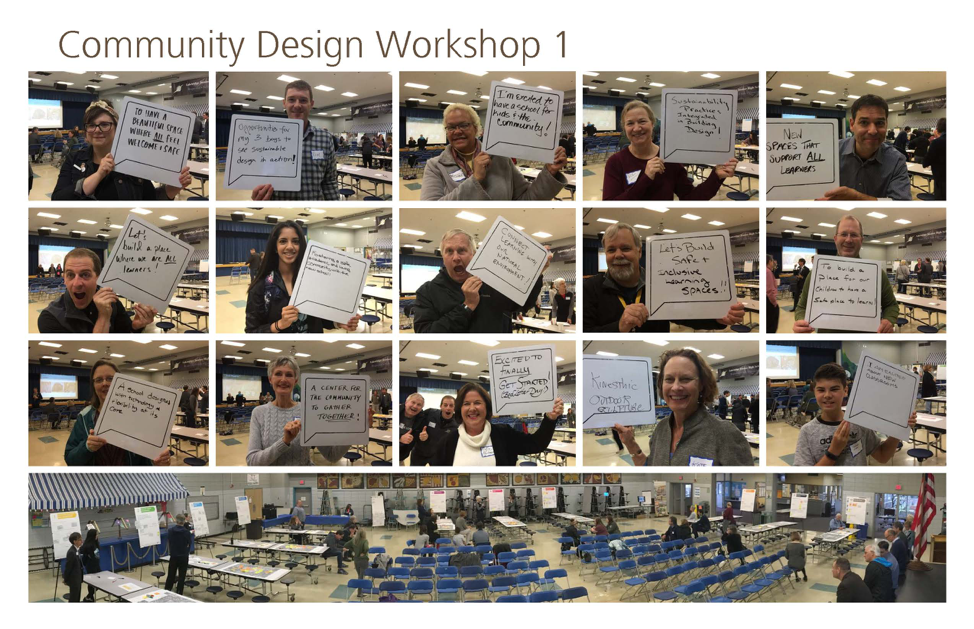
Some of the biggest assets and biggest challenges on the site were the dozens of mature Oregon White Oaks. These trees were loved by the school community, had sheltered decades of children and many adults, and along with the adjacent playfields, contributed to a park-like setting. Being environmentally conscious and thinking creatively, the Lake Oswego School District wondered what could be done to reuse those trees. Mahlum had learned that WholeTrees uses trees that would otherwise be waste items and turns them into structural round timber components. With this knowledge, structural round timber from site-sourced trees was included in the design from the beginning as a way to give new life to trees that needed to be cleared, take full advantage of sustainable materials, and keep these cherished trees as part of the community.
Knowing that before we reuse, we must first reduce consumption, landscape architects at Mayer/Reed worked to preserve as many existing trees as possible. Plumbing systems were redesigned to avoid the root systems of tress that would remain. In fact, the main waterline needed to be re-routed to preserve one of the most impressive trees. For trees that would be removed, the Lake Oswego School District hired a consulting arborist from Teragan & Associates. WholeTrees then reviewed the arborist’ report to see which trees likely had the form, diameter, and material properties to be used as structural columns in Mahlum’s design. Of the trees scheduled for clearing, WholeTrees identified Oregon White Oak, Scarlet Oak, and Sweetgum as varieties for 29 columns. White Oak is known for its decay-resistant properties and would be specified for all exterior columns. The interior community room and library would enjoy the playful branching forms of the Scarlet Oak and Sweegum.
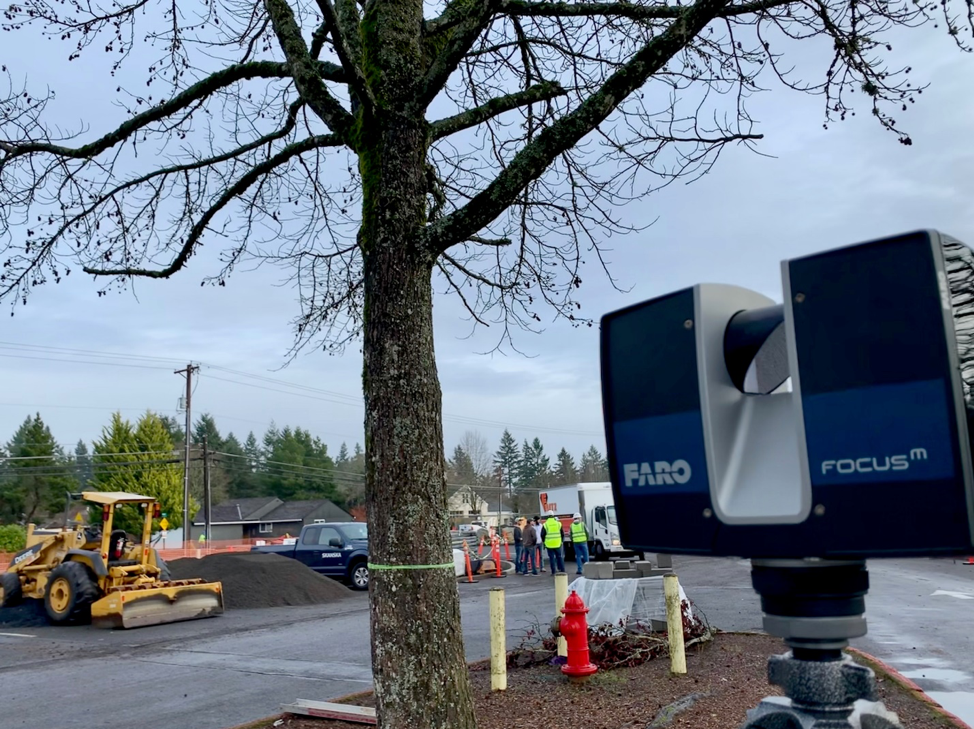
Next, WholeTrees visited the site with our Faro M70 laser scanner to scan and create 3D images of each tree. Using the data generated from 3D scanning, we made digital models of the trees which Mahlum incorporated into its Revit renderings. We also collected important structural data for analysis by KPFF Consulting Engineers, frequent collaborators with WholeTrees and consulting structural engineers for this project. You can find digital images of some of these trees and some of the data generated by our technology in the beta of WholeTrees’ Online Inventory Platform. You can also learn more about our 3D imaging and how it fits into our process in this video.
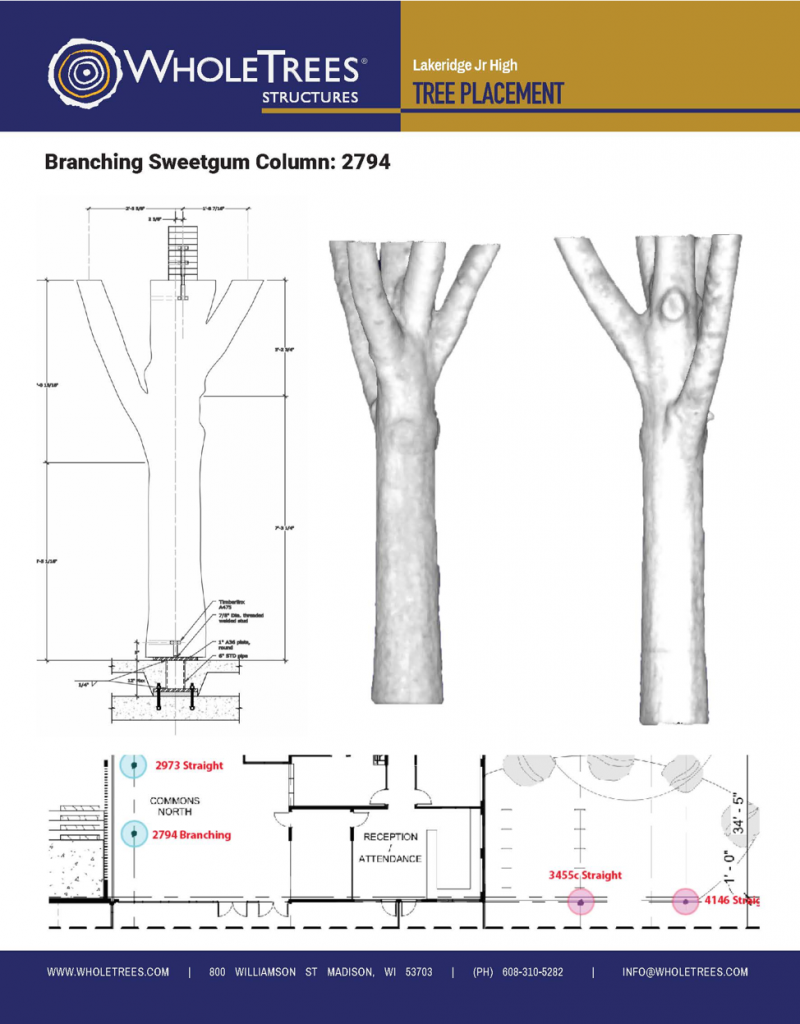
Tree Cutting Guide – WholeTrees Structures 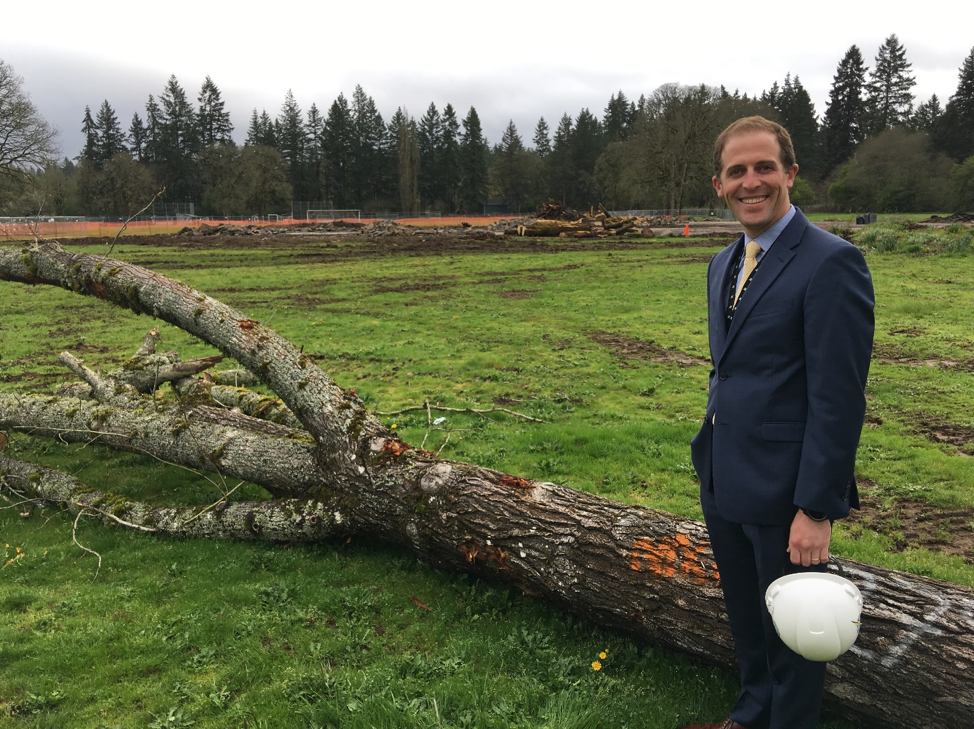
Felled Tree and Middle School Principal – Mahlum Architects
Working with Skanska USA Building, the general contractor for the project, WholeTrees developed the cut plan to fell each tree and returned to the site to provide instruction to the excavation crew. At the same time, we found a regional source for additional trees from Zena Forest Products to complete the supply for the school. Once the site-sourced trees were cut, WholeTrees coordinated loading them onto trucks and delivering them to one of WholeTrees’ regional fabrication partners in Washington, RLD Company. There, the trees go through third-party visual grading, testing, processing, and fabrication. Fabrication work on the trees will be done according to shop drawings made by WholeTrees in our Madison headquarters.
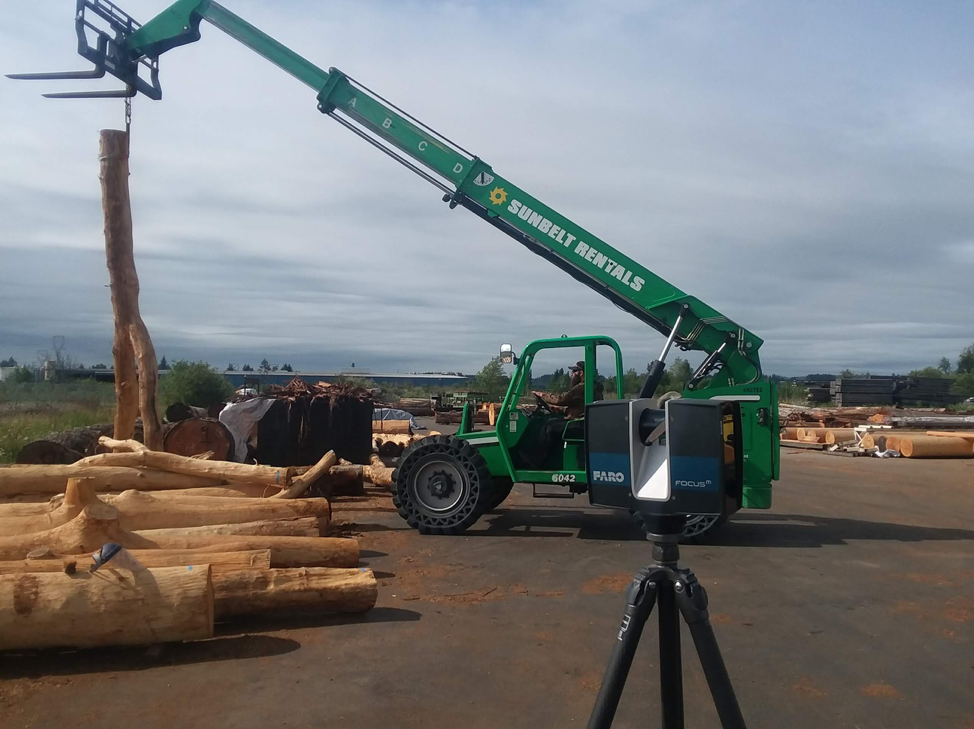
In some ways, these trees can serve as a symbol for the larger impact on the environment. When trees thrive, we thrive; when trees suffer, we suffer. When we find a way to preserve as much as we can and make the highest and best of use of what we cannot save, we can create something new and wonderful. This fall, the trees will return to Lake Oswego and be installed as 16 interior and 13 exterior structural columns. Once they come full circle, the site-sourced trees will have traveled 200 miles round-trip and will have been transformed into beautiful, biophilic structural components that will stand in their new forever home, only dozens of yards from where they grew. In the new school, these columns will last as long as the school lasts—continuing to provide support and shelter for decades of students.
When Lakeridge Middle School opens in Fall 2020, these round timber columns will enhance and transform the spaces they support. Their solid forms and rounded curves will be welcoming and inclusive while making students feel secure. They will make engaging spaces that encourage activity and exploration. The story of the trees will help students understand the importance of local resources and communities in the 21st century globalized world. The trees will create a direct connection to the environment and encourage students to learn about the natural world just steps outside the classroom door.
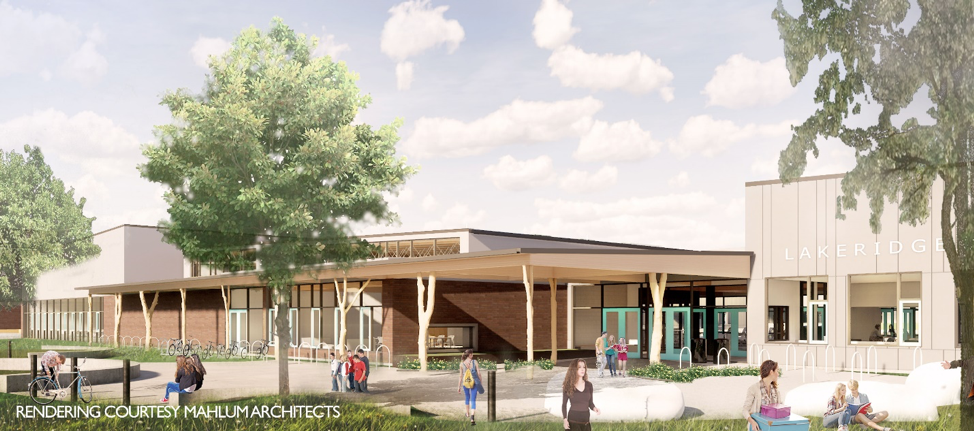
This project, and the example it sets, provides inspiration for, demonstrates the value of, and breathes life into collaborative sustainable design. This is the kind of work that can be achieved when companies and people with different skills but shared goals and values come together. By bringing everyone to the table, we can create a bigger pie. We can use sustainable natural materials that enhance the built environment, creating strong nature-design and nature-health relationships. We can create spaces that will stand the test of time.
Working together, we can change our built environment. We can make healthier spaces to work, live, and play. We can create visual and material connections to nature, connections to natural systems, biomorphic forms & patterns, prospect, and mystery. We can bring economic benefits to urban and rural communities. From a global environmental lens, no individual project will undo the damage already done, but we can change our ways of thinking and business practices to build a better future for all. As Ban Ki-moon said, this is an insurance policy for the planet. It is a policy where we are all listed as beneficiaries and it is a smart investment.

